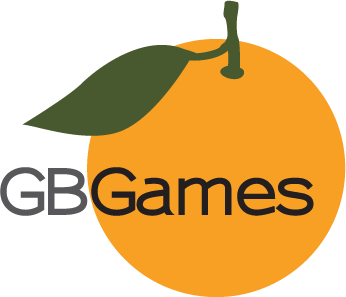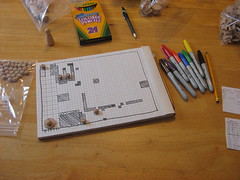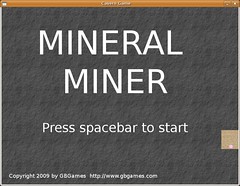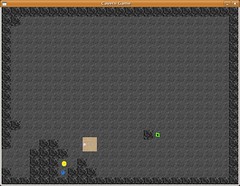Greg Costikyan gave a presentation at GDC Austin ’09 titled “Randomness: Blight or Bane?”.
It’s a long post to read, but I like how this one is actually readable. Most presentations end up online as slideshows only. Without the speaker there, the context of a slide is also missing, and it is hard to know what you’re expected to take away from the presentation. In this case, it seems he took his presentation, put it into blog post form, and used the slides as images to break up the text nicely.
He opens it up by explaining how our sense of accomplishment requires that we feel we used skill to win. If you press a button that has a 50/50 chance of declaring “YOU WIN”, it’s not really compelling by itself. We won’t feel we earned anything. It was blind luck that resulted in a victory.
So naturally you would think that if you want compelling, interesting games, you need to eliminate randomness, right? Well, that’s a tall order, something I wish someone would have told me when I was designing early games in the Game Design Concepts course.
And yet, lots of popular, long-standing, “stood-the-test-of-time” games have random elements in them. Some are more random than others. For instance, a game I’ve been enjoying with my friends these days is Farkle. It has many different names and various implementations, so if you want to know how to play, you can read the rules yourself on the Wikipedia page. The point is that Farkle is a dice game, and as such relies heavily on the results of dice throws. It’s pretty random, and nothing about the result of your roll is impacted by your skill. And my friends and I are enjoying it.
Fun fact: Sierra Games put out a Hoyle-series game with a version of Farkle.
Ok, but when you win in Farkle, why aren’t you bored? It’s probably because the player is choosing when to rely on luck. If I have 1200 points, and only one die left, there is a 1 in 3 chance of rolling well and continuing with all six dice for even more points. If I take the chance and win, that’s a huge win, enabling me to increase my score greatly. If I lose, I lose the 1200 points I racked up. On the other hand, if I want to play conservatively, I can pass the die to another player and keep the 1200 points on my score sheet. Now the next player might roll that one die and try to build on my score, essentially riding on my success, or he/she can roll all six and start over.
Another way I impact the game is in how I choose which dice to keep. If I roll six dice and get a 1 and two 5s, I can keep all three of them, but I could also keep only one of them so when I roll the remaining dice, I have a chance of getting better results.
Without the randomness, however, what would Farkle be? Part of the game is essentially gambling. I sometimes take high-risk rolls on the off-chance that I will leap ahead in scoring. I sometimes fail. If I couldn’t fail, it wouldn’t be fun. I’m basing my decisions on my understanding of the odds of scoring with the remaining dice in my hand.
I would highly suggest reading the article, but here is a quick summary of the role of randomness in game design:
- to heighten the realism of a simulation.
- to break up symmetry.
- to ensure variety of play, preventing players from predicting what happens next.
- to offset the vast differences in skill levels between players to allow everyone a chance of winning.
- to generate algorithmic content.
There is a point where Costikyan talks about why games like Chess and Go, which have no random elements and players in symmetrical starting positions, are able to remain interesting while games such as Hex and Twixt are “solvable”.
Games in which all players pursue the same strategy result in a win by the player who makes the fewest mistakes — or, if none, by the player who has the player-order advantage.
This is dull.
Chess and Go have strategic depth, and the symmetry is broken soon enough. Hex and Twixt have an optimum strategy. In Chess, each player isn’t using the same strategy. There are many that can be pursued, especially as the game develops. This reasoning is why my early attempts at those game designs sans random elements were so hard to make interesting. Especially because it was an early, rough design, there was no strategic depth! Whoever went first would win, and if someone was mathematically inclined, they would find a way to solve my games. One of the things I did in an attempt to fix this problem in my High School Reunion board game design was make it possible for each player to pursue different paths to victory. Apparently I was on the right path in attempting this, but as Costikyan points out, Chess was developed and refined over thousands of years, whereas I was designing my game part-time for a class. I’m not going to easily create a great game design if I am trying to avoid using luck to play a role. B-)
The article also mentions a few uses of random elements which seem pointless. For instance, weapon damage in Quake was random, but never enough to impact the game in a meaningful way. Most people wouldn’t know that it was random at all. So why include it at all?
His explanation of how randomness regresses to the mean, allowing strategic elements to dominate if both randomness and strategy is possible, is also fascinating stuff.
In game design, randomness is a tool. Like any mechanic, having a deep understanding of it can only help you apply it better.







